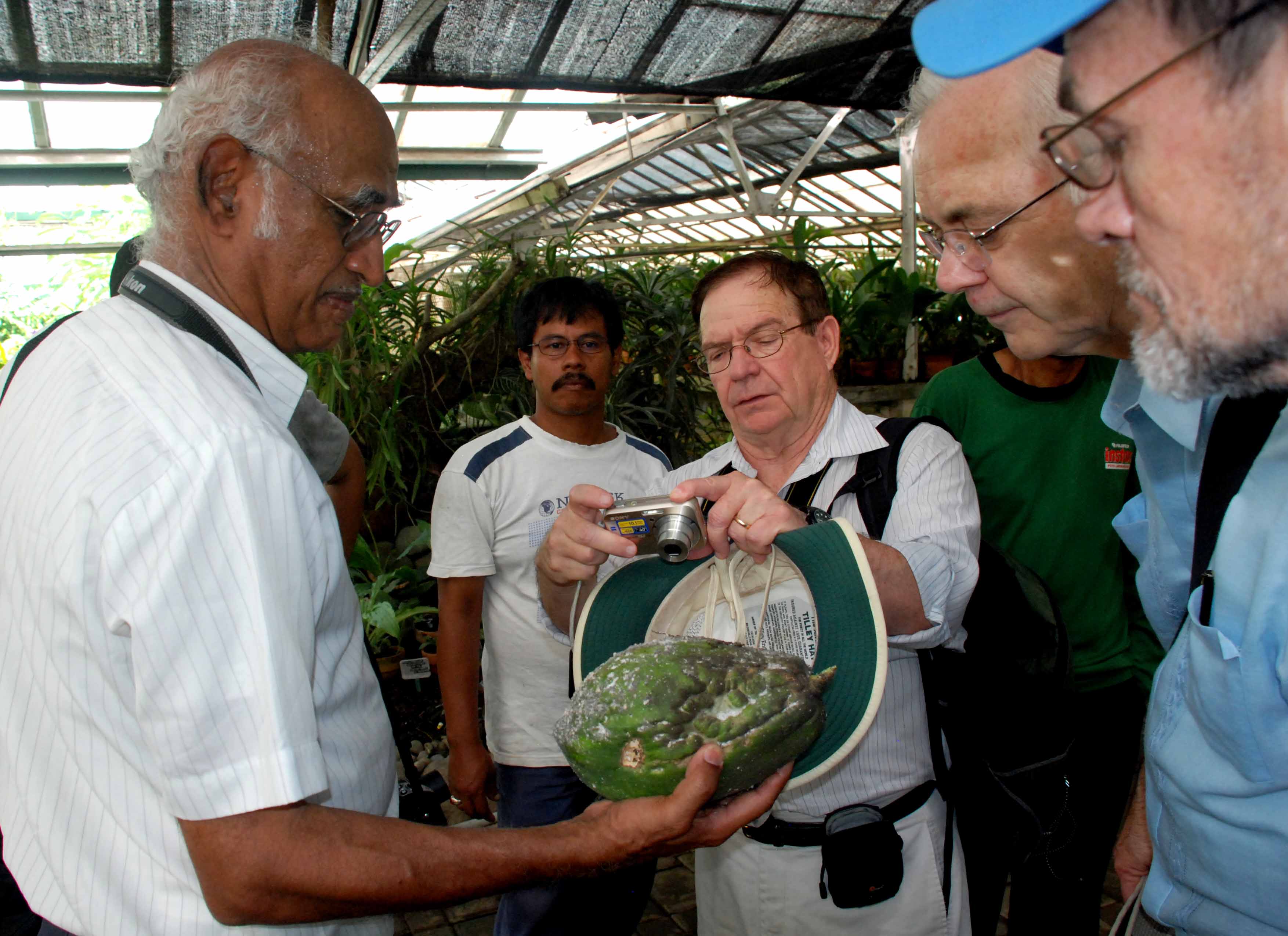University scientist plays key role in saving the livelihoods of papaya farmers in Sri Lanka

A university scientist has played a key role in saving the livelihoods of papaya farmers in the South Asian nation of Sri Lanka.
Muni Muniappan, director of a multimillion dollar U.S. Agency for International Development (USAID)-funded program at Virginia Tech, was the first person to recognize the presence of an insect in South and Southeast Asia that is destroying papaya plantations across the region — the papaya mealybug.
Following publicity of this discovery in summer 2008, scientists in Sri Lanka's Department of Agriculture contacted Muniappan to determine if the destruction they were seeing on papaya in Sri Lanka was caused by the mealybug. Muniappan worked with an expert in the California Department of Food and Agriculture to confirm that it was.
The next step was to seek a solution. Muniappan advised the Sri Lankan scientists that the U.S. Department of Agriculture (USDA) was raising parasitic wasps that had proven highly effective in combating the papaya mealybug. There was only one problem: The parasitic wasp-rearing facility was in Puerto Rico. Getting the wasps from Puerto Rico to Sri Lanka through all the appropriate government hoops was no small challenge.
The transfer took months of communication between scientists and government officials, all of it coordinated by Muniappan, director of the USAID-funded Integrated Pest Management Collaborative Research Support Program. The program is managed by Virginia Tech's Office of International Research, Education, and Development.
In May 2009, three species of the wasps were packed in six vials and placed in a white box, which was sealed and marked with a red ribbon. Sending the insects by post was not possible, as they would have died before arriving at their destination. Instead, they had to be hand-carried through airport security and shepherded through a multitude of government checks. The trip took over 36 hours.
After getting special clearance from the U.S. Transportation Security Administration to bypass X-ray machines that could kill them, the wasps were set to begin their journey. The most direct route from Puerto Rico to Sri Lanka included a stopover in California and one in Taiwan. However, Sri Lanka does not have diplomatic relations with Taiwan, and without intervention at the government level, the wasps would be required to pass though security X-ray machines. Because of these complications, this route was abandoned for a longer one through Dubai.
The Dubai route proved successful, and on May 16, 2009, half of the shipment was released in papaya orchards at strategic locations in Sri Lanka. The remaining insects were sent to a quarantine rearing facility where a continuous supply is being maintained.
Already, reports of progress are flying between farmers waiting to receive the valuable wasps, their livelihoods dependent on the outcome. Scientists expect it to take six months to a year for the wasps to completely control the papaya mealybug. They, along with government officials across Asia, are working to transfer the wasps to other Asian countries that also have papaya mealybug infestations.
The papaya mealybug was first confirmed as an invasive species in Asia in May 2008, when a team of scientists led by Muniappan recognized them on papaya trees at the Bogor Botanical Gardens in Indonesia. Efforts were then made to raise awareness of the possibility of a widespread invasion. Since then, the pest has been confirmed in six countries in Asia and is believed to be present in several others.
Even though the pest is called the papaya mealybug, it infects other plants as well, including cassava, eggplant, peppers, sweet potato, beans, and mangoes. All of these crops are important to the food security of Sri Lanka, and according to some estimates make up as much as 35 percent of the country's annual agricultural income.
Muniappan believes the papaya mealybug has been in Asia for several years but simply has not been recognized. The only solution to this menace, he says, is classical biological control: introducing a species' natural enemies. Along with a USDA scientist, he used the parasitic wasps to successfully control the papaya mealybug in the Pacific islands of Guam and Palau in 2002 and 2004, respectively.
The wasps are effective biological control agents because they are species-specific, preying only on the papaya mealybug. The adult wasps lay their eggs inside the mealybug larvae. When the eggs hatch, the immature wasps eat the mealybug larvae until the larvae die. Muniappan says the papaya mealybug became a problem in Asia because no natural enemies traveled along with it. For this reason, attacks by the papaya mealybug are a serious threat. Papaya trees, which are not a hardy species to begin with, can die in a matter of months when infested. Experts believe the papaya mealybug came to Sri Lanka via the importation of ornamental plants.
With the creation of an in-country wasp-rearing facility, Muniappan is optimistic that the papaya mealybug threat can be mitigated in Sri Lanka and that local farmers can return to their livelihood: growing papaya. He is also excited that the Sri Lankan facility may serve as a center for the supply of this beneficial wasp to all of Asia. "If we can get everyone in Asia to recognize the seriousness of this pest, cooperate, and work together," Muniappan says, "then, the papaya mealybug can be controlled, and losses in the millions of dollars due to crop damage can be eliminated."




